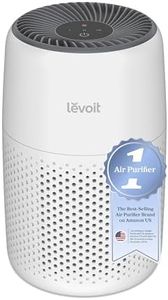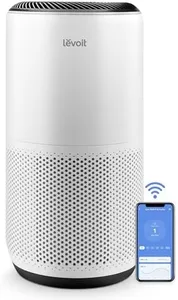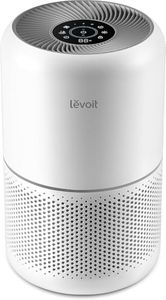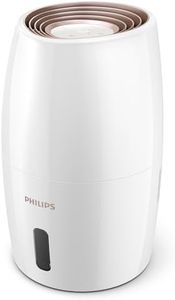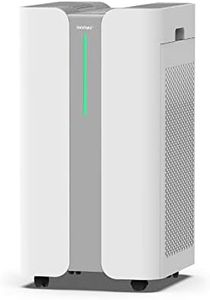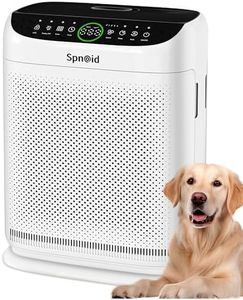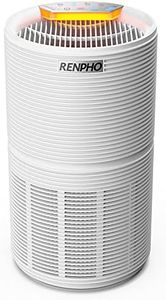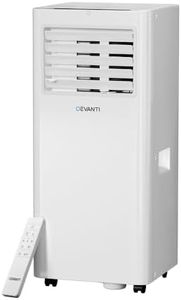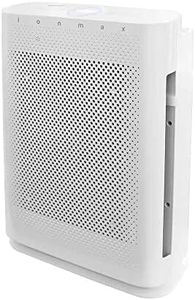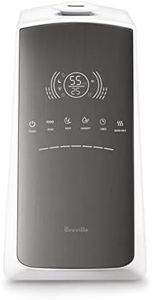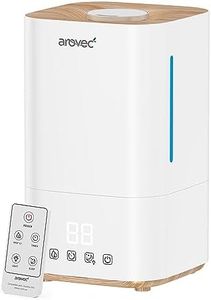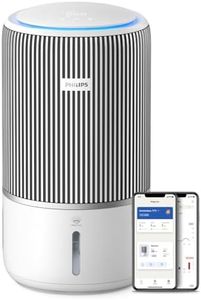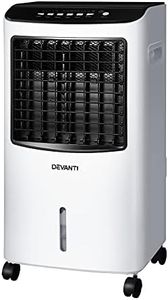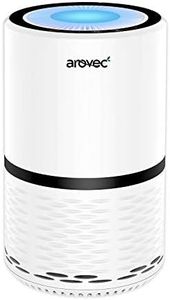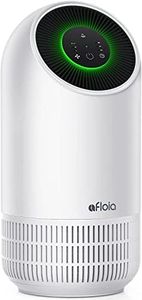We Use CookiesWe use cookies to enhance the security, performance,
functionality and for analytical and promotional activities. By continuing to browse this site you
are agreeing to our privacy policy
10 Best Humidifier Air Purifiers
From leading brands and best sellers available on the web.Buying Guide for the Best Humidifier Air Purifiers
Choosing a humidifier-air purifier combo can feel a bit overwhelming, but breaking things down to a few key features makes the process much simpler. These devices aim to keep your indoor air both clean and comfortable by filtering out particles and regulating humidity. To get the best fit for your home, think about your space, air quality needs, and the effort you’re willing to put into upkeep. Focusing on the most important specifications will help ensure you get a machine that meets your expectations and supports your daily comfort.Coverage AreaCoverage area is the size of the room the device can effectively service, typically measured in square feet or meters. This matters because a unit that's too small for your room won't clean or humidify the air adequately, while one that's too big might be inefficient or overly bulky. Coverage is usually segmented into small (up to 200 sq ft, good for bedrooms or nurseries), medium (200–500 sq ft, appropriate for living rooms or offices), and large (over 500 sq ft, suited for open layouts or extra-large rooms). To choose the right one, measure the largest room you’ll use the device in and pick a model with a coverage rating at or above that number.
Filtration SystemThe filtration system determines what kind of particles the device can remove from your air, such as dust, pollen, smoke, or odors. Common types include HEPA filters, activated carbon filters, and sometimes UV or ionizing features. HEPA filters are excellent for allergens and fine particles, while carbon filters help with smells and gases. Look for units with a combination if you want broader coverage. If you have allergies or sensitivities, prioritize strong particle and allergen filters; if combating odors or chemicals is more important, focus on activated carbon or similar technology.
Humidification CapacityHumidification capacity is how much moisture the unit can add to the air in a given time, often measured in milliliters or ounces per hour. This spec affects how quickly and effectively the device can raise humidity in your space. Devices are generally categorized as low (suitable for small rooms or mild dryness), medium (versatile for most home spaces), and high (for very dry environments or large spaces). Think about how dry your indoor air feels during colder months and how big your space is—select a higher capacity if you often experience dryness or have larger rooms.
Water Tank CapacityWater tank capacity shows how much water the humidifier can hold before needing a refill. Larger tanks run longer between refills, making life easier if you intend to run the unit overnight or all day. Tanks can be small (less than 1 liter, best for short use), medium (1–3 liters, balanced for most rooms), or large (above 3 liters, great for large rooms or long continuous use). If you don’t want to refill often or will use the device in a big space, look for a larger tank; for smaller rooms or lighter needs, a small tank will suffice and may be easier to clean.
Noise LevelNoise level, typically measured in decibels (dB), indicates how loud the device will be during operation. Quieter models are important for use in bedrooms or offices where noise could be distracting. Devices are usually categorized as whisper-quiet (below 30 dB, barely noticeable), moderate (30–50 dB, background hum), or loud (above 50 dB, more like a conversation or fan). Pick a quieter device if you are sensitive to noise or need the unit in sleeping areas; moderate noise might be fine for living rooms or during daytime use.
Ease of MaintenanceEase of maintenance refers to how simple it is to clean and care for the unit, including filter replacement and tank cleaning. This is crucial for preventing mold, bacteria, and maintaining air quality. Some models require frequent filter or water changes, while others are designed to simplify access and cleaning. Consider your tolerance for routine upkeep—if you prefer minimal chores, look for devices with accessible filters, dishwasher-safe water tanks, or indicators that alert you to required maintenance.
Additional FeaturesAdditional features might include smart controls, automatic humidity sensors, air quality monitoring, night modes, or child safety features. These can make the device more convenient and better suited to unique needs. For instance, smart controls allow remote or scheduled operation, and sensors help maintain comfortable humidity automatically. Think about which extras match your lifestyle—busy households may benefit from automation, while those with children may need added safety.
